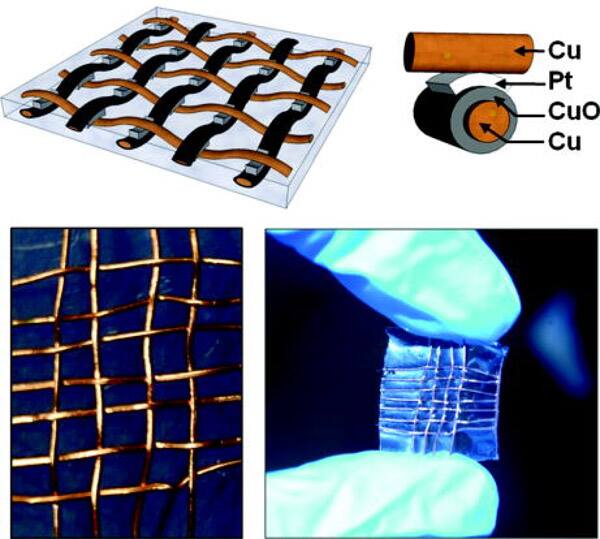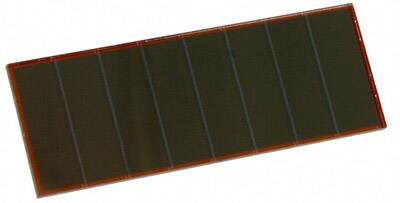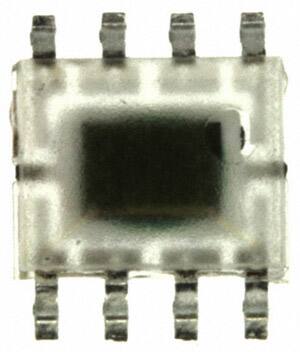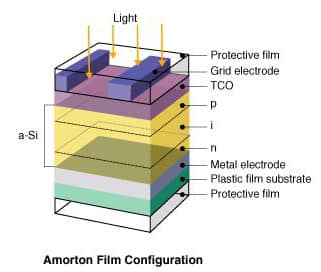Energy Harvesting Moves into Wearable Electronics
投稿人:DigiKey 欧洲编辑
2012-02-15
Electronic devices are increasingly being integrated into clothing and connected together. Harvesting energy from the environment is being used to power equipment, links, and even provides some fashion elements.
One exciting area of development for energy harvesting is wearable technology. More and more electronics are being integrated into clothing, either for functional or fashion reasons. For example, music players are being integrated into coats and fashion designers are using electroluminescent and LED displays, often linked to music, to create active clothing.
Much of this requires power, and being able to harness vibration, thermal or solar energy to power displays and wireless links directly or to recharge thin, light lithium polymer batteries provides a key step forward for the technology. No one wants to have to plug their shirt into the mains to recharge it, and providing that power from the environment can significantly extend the charging cycle.
This also needs a step forward in some of the energy harvesting technology, particularly solar cells. While the efficiency of such cells has increased so that they can generate useful power from indoor lighting, glass or crystalline silicon-based devices can be heavy. However, a new generation of amorphous flexible cells is becoming increasingly popular to integrate into clothing to supply power.
One such example comes from researchers at the Australian National University, who have developed a thin, flexible solar panel called Sliver Cell. The technology has been developed for military use as wearable solar panels to power equipment and creates a step to more rugged yet flexible cells.
Washing clothes with integrated electronics has also been seen as a major drawback. One breakthrough here comes from researchers at Seibersdorf Laboratories and the Austrian Institute of Technology (AIT), who have managed to weave a standard NFC radio tag and antenna into garments in such a way it can be washed.
The antenna is integrated into the fabric as it is made, with the NFC chip added by hand. The process is managed in such a way to enable the garment to be washed at 60°C, spin dried and even ironed with a conventional electric iron, all without damaging the tag. This allows NFC-enabled washing machines to take data directly from the clothes for the particular washing program.
The drive to wearable electronics is also creating new approaches to the underlying technology. Space researchers at NASA have created a switching memory out of copper that can be weaved and so integrated directly into the fabric of clothing.

Figure 1: NASA's memory array for wearable electronics.
Starting with copper wires, a sandwich of copper, copper oxide, and platinum is built in a crossbar architecture and passivated to create a resistive memory structure. This two-terminal crossbar array can be easily embedded into the material as textiles consist of a network of orthogonal fibers and the cross-point contacts are inherently formed at each intersection, resembling the crossbar memory structure. While the dielectric layer is normally an insulator, the metal oxides can be either in the insulating or conducting state depending on the applied voltage, providing the memory function.
Researchers in South Korea are also using resistive memories, or "memristors", to develop flexible storage that can store data without constant power and be used in wearable devices, particularly for medical monitoring and treatment.
The researchers at the Korea Advanced Institute of Science and Technology (KAIST) have made memristors from amorphous titanium dioxide with aluminum electrodes at the top and bottom and flexible transistors.
All of these technologies are set to increase the demand for power in clothing, and this can be provided in a number of ways.
Piezoelectric vibration sensors can be used to capture the vibrational energy. This is particularly relevant to footwear, particularly training shoes, where the constant movement generates current to power a wireless link. This has already been implemented in "smart" shoes from Nike, powering a wireless link back to a mobile phone or wearable terminal. This is used to provide data such as the number of footsteps or average speed.
Researchers at IMEC in Belgium have developed a micro-machined design that could also be used to generate power from movement. Their MEMS energy harvester is a cantilever with a piezoelectric layer of aluminum nitride between metallic electrodes. This forms a capacitor that generates charge as the cantilever bar vibrates, storing power. The voltage across the capacitor can then be harvested to drive wireless circuits. As this can be built on standard 6 inch CMOS wafers, there is potential for these tiny devices to be integrated either alongside the wireless transceivers to deliver power directly or distributed around clothing.
Thermal sensors can be used around the body to generate power from a temperature difference. Devices using the Peltier effect generate current from the temperature gradient between the interior and exterior of clothing. This can be used to trickle feed a battery or power a wireless link directly.
To show it is possible, researchers at the Holst Centre in Eindhoven, Holland, have integrated a thermoelectric generator (TEG) into a shirt. The TEG produces an average power of 1 mW when sitting in the office at 22°C, and 2 mW when walking around. This can provide power for wearable electronics such as health-monitoring devices that currently need around 0.4 mW today, and even that is expected to fall.

Figure 2: Integrating an array of thermopiles into a shirt to turn the body's heat into power.
The TEG links sixteen one-stage thermopiles, each sandwiched between 3 cm hot and cold plates. The cold plates are glued onto a carbon fabric that has been sewn on the inner side of the shirt to carry heat away and provide the temperature difference. This two-layer construction makes the shirt comfortable and means it can be washed and ironed.
The CBC-EVAL-09 thermal evaluation board from Cymbet provides a Peltier effect device to drive a wireless link, integrating the DC-DC converter needed to provide the power. Similarly, EnOcean's EDK312C evaluation kit also uses thermal energy to power a wireless link.
Solar cells are a key provider of power for wearable electronics. EnOcean's ECS300 solar cells can also be used with the evaluation kit as an alternative source of power. The smaller ECS 300 is intended for use in unidirectional sensor applications, while the ECS 310 is designed for use in bi-directional applications using EnOcean's Smart Ack technology.

Figure 3: EnOcean's EH300 solar cell.
Solar cell technology is well established and with flexible substrates, they can now be integrated into designs of external clothing such as coats. The efficiency of the cells has also increased so that they can generate power from both outdoor and indoor lighting, boosting their use. While they can be used to power devices directly, the more common route is to trickle charge lithium ion batteries that are light and can also be integrated into clothing. This provides the power for displays and music players, with power left over for LEDs and electroluminescent displays for fashion purposes.
IXYS provides IXOLAR SolarMD for charging various battery powered and handheld consumer products such as mobile phones, cameras, PDAs, MP3-Players and toys. They are also suitable for industrial applications such as wireless sensors, portable instrumentation, and for charging emergency backup batteries.
With a cell efficiency of typically 22 percent, SolarMD gives the ability to extend run time even in "low light" conditions, increasing battery life and run time in a small footprint which can be easily accommodated in the design of portable products. The design allows connection of the SolarMD flexibly in series and/or in parallel to meet specific power requirements.
Clare gives designers a different approach. Rather than an array, the CPC1822 is a monolithic, photovoltaic string of solar cells with switching circuitry. When operating in sunlight or a bright artificial light environment, the optical energy will activate the cell array and generate a voltage at the output. The solar cells are capable of generating a floating source voltage and current sufficient to drive and power CMOS ICs, logic gates, or provide the trickle charge for a battery.

Figure 4: Clare's photovoltaic cell.
Sanyo Energy has been at the forefront of developing solar cells, with a focus on flexible cells with its Amorton technology.
Unlike crystal silicon, amorphous silicon has irregular atomic arrangements that allow much more light to be absorbed, making the cell thinner for a given power output. This means that an ultra-thin amorphous silicon film of less than 1 µm can be produced and used for power generation. By using a plastic substrate, this film can be made flexible and used for energy harvesting in wearable systems.

Figure 5: Sanyo's Amorton solar cell film.
Amorton is an integrated amorphous silicon solar cell that uses silane (SiH4) as its source gas and is made using a plasma vapor deposition process. Three amorphous silicon layers – p-layer, i-layer, and n-layer – are formed consecutively on a glass substrate. This p-i-n junction corresponds to the p/n junction of a crystal silicon solar cell, creating an array of junctions that allow any desired voltage to be obtained for a variety of power outputs. The flexible film can then be sewn into jackets to provide power to equipment.
There is increasing interest in integrating a wide range of electronic capabilities into clothing and making that clothing rugged and usable. From communications to processing and even fashion displays, electronics provides designers with more opportunities to innovate.
Power is a key element of this innovation, and energy harvesting technology allows designers to overcome some of the challenges of integrating such devices into clothing. While batteries have a strong role to play, harvesting the energy from the environment makes the clothing more usable and long lasting, both from charging and from a user perspective.

免责声明:各个作者和/或论坛参与者在本网站发表的观点、看法和意见不代表 DigiKey 的观点、看法和意见,也不代表 DigiKey 官方政策。









 中国
中国